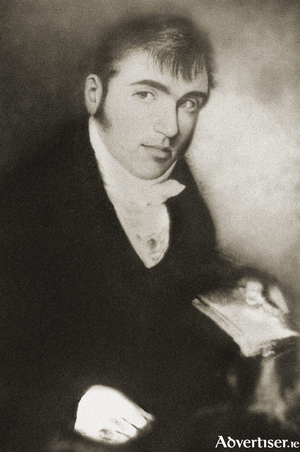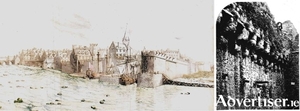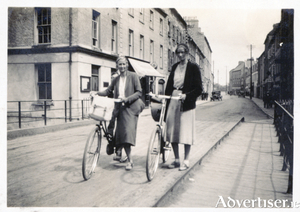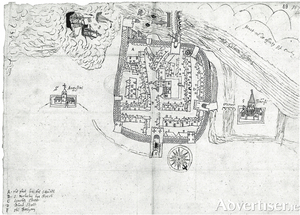Search Results for 'Galway library'
9 results found.
James Hardiman, historian

James Hardiman, who wrote the history of Galway, died on this day, November 13, 1855. He was born in Westport in 1782, the son of Tomás Ó hArgadáin and Marcella Hall. Irish was his first language. The family moved to Galway where his father had a ‘small but respectable shop’. He had hoped to study for the priesthood but he had to give up that idea when he lost his right eye in an accident. He studied law instead in the King’s Inns in 1804, became a solicitor in 1814 and worked in the Public Records Office from 1811-1830.
Our fortified city

The town of Galway was virtually an independent city state, self-contained politically and ecclesiastically, relying on its own resources as it was cut off from the central English authority until the 16th century. Then, the Tudors began to extend their influence westwards so that the city gradually came totally under their dominion. The real symbol of that growing influence was the fortifications, four in number, raised to defend this all-important location against all enemies, notably France and Spain.
The Galway and Salthill Tramway Company

The mid-19th century was an era of little movement of people for social or pleasure purposes. In the post-Famine era, it was only business people of necessity, those who were emigrating or those whose financial circumstances allowed who travelled. Railway travel had come Galway in 1851 and there were a few horse drawn omnibuses operating between the city and the village of Salthill, which was really a rural backwater. But, it was becoming a fashionable place to live and was developing as a tourist destination. It was therefore no surprise when a tramway system between the city and the village was proposed.
George Chambers’ photographic archive

George Chambers was born in England in 1873. He lived at Temple Fortune Lane in Middlesex. He travelled extensively and this included several trips to Ireland. In 1929, he toured parts of West Cork and Wicklow; in 1931, he visited Galway city and the Aran Islands and on subsequent trips he went to the Blasket Islands, to Achill and Clare Islands, and to various other islands off the coast of Donegal.
Galway’s Pro-Cathedral, a building of some significance

At early Mass on Christmas morning 1842, there was a dreadful accident at Galway’s Pro-Cathedral during which 37 people were killed, and many more were injured. Known as the Parish Church, and completed just twenty-one years before, it was by far the largest Catholic church in the town, surprisingly built in preCatholic Emancipation times.
The Holland influence in Galway

In the year 1900, Patrick Holland had a travelling shop near Athenry. He later opened a shop there and is credited with having the first car in the town. In 1914 he met Dorinda Egan and it was love at first sight. They married and had five children Brendan, Michael, Maureen, Angela and John. They eventually moved to Galway in 1930, and tried to set up a business in Dominick St. but the bank would not give them the money. They eventually managed to buy the premises of Mary Leahy’s Newsagency in Williamsgate Street.
Fairies and pookas in The Claddagh

These two women are chatting at the doorway of a Claddagh house on Dogfish Lane c1920. The lane is cobbled, the geese and hens are pecking around, the thatch roof is perfect, there are flowers on the windowsill, everything is calm and peaceful, but what are they talking about? Could it be about piseógs, about the ‘good people’, the fairies, the banshee?
City council supports EU funding for pedestrian bridge at Salmon Weir
The Galway City Council has thrown its support behind a proposed new pedestrian footbridge over the River Corrib, adjacent to the existing Salmon Weir Bridge and in front of the cathedral.
Galway, historic towns atlas

On Monday next, November 1st, President Michael D. Higgins will launch the latest title in a series of Historic Towns Atlases of Ireland. This one is on Galway and is compiled by Jacinta Prunty and Paul Walsh. It is essentially an illustrated history of the development of the built up area of the city as seen through 57 illustrations starting with the earliest printed maps of Galway, antiquarian prints, 19th century paintings and photographs. Many of these are in colour, and many are A3 in size.

